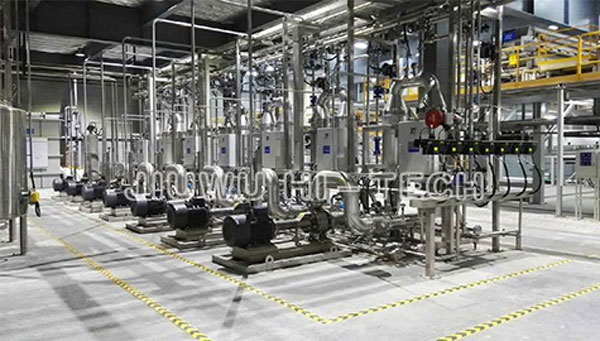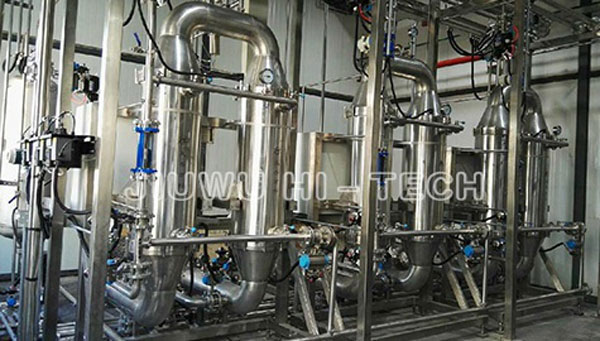In recent years, the wafer industry has developed rapidly, but at the same time, it also produces a large amount of wastewater. The production wastewater mainly comes from the cleaning process of the polysilicon ingot slicing process. The acid-containing wastewater is produced in the cleaning process after the surface treatment of the polycrystalline silicon ingot with the mixed acid. Since the surface treatment is a mixed acid of nitric acid + hydrofluoric acid, the main pollution in the washing wastewater is pH, fluoride, and nitrate. The organic wastewater is produced in the cleaning process of the sliced polycrystalline silicon wafer. Since the cutting fluid (the main component is polyethylene glycol) and the cut micro powder (the main component is silicon carbide) are used for slicing, the main pollutant in the cleaning wastewater is CODCr and SS.
Polysilicon cutting fluid is made up of polyethylene glycol as the main body and added with various additives. It has a suitable viscosity index, good fluidity, and thermal conductivity, and has good dispersion stability and suspension effect on silicon carbide micropowder. A large amount of waste liquid is generated after cutting, and the waste liquid contains a considerable amount of polycrystalline silicon powder, which has a certain recovery value. The polysilicon powder is recovered by the ceramic membrane separation technology, becoming the so-called cutting fluid recovery. And the site is clean and sanitary, which is in line with the national energy-saving and emission-reduction industry orientation.
Ceramic membrane equipment technology is advanced and mature, with low operating costs and fast return on investment.


Ceramic membrane filtration process can directly deal with the waste liquid containing silicon produced in the solar energy production process, collect silicon, reuse pure water and coolant.
The process can separate silicon powder and pure water, recover over 98% of the silicon powder, reuse more than 90% pure water,reuse about 50% of coolant and shaping agent , which can greatly reduce the load of the sewage station.
The process has the advantages of short process, simple operation, short payback period, and has become the preferred standard process for the benchmarking enterprises in the silicon chip industry.
